© 2025 MJH Life Sciences™ , Patient Care Online – Primary Care News and Clinical Resources. All rights reserved.
GI Case Quiz: A Young Woman with LLQ Pain, Fevers, ↑ WBC
A young woman presents with sharp LLQ pain, fever, and increased white count. What's your diagnosis?
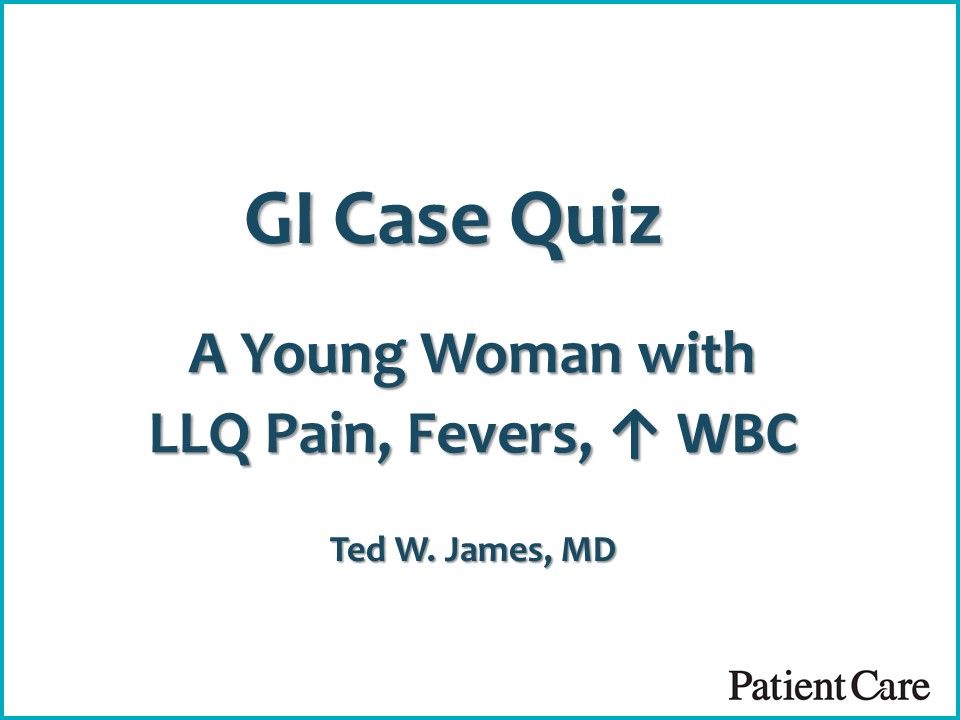
A young woman presents to the emergency department complaining of left lower quadrant (LLQ) pain and fever. How would you diagnose? Scroll through our short case quiz above for more details.
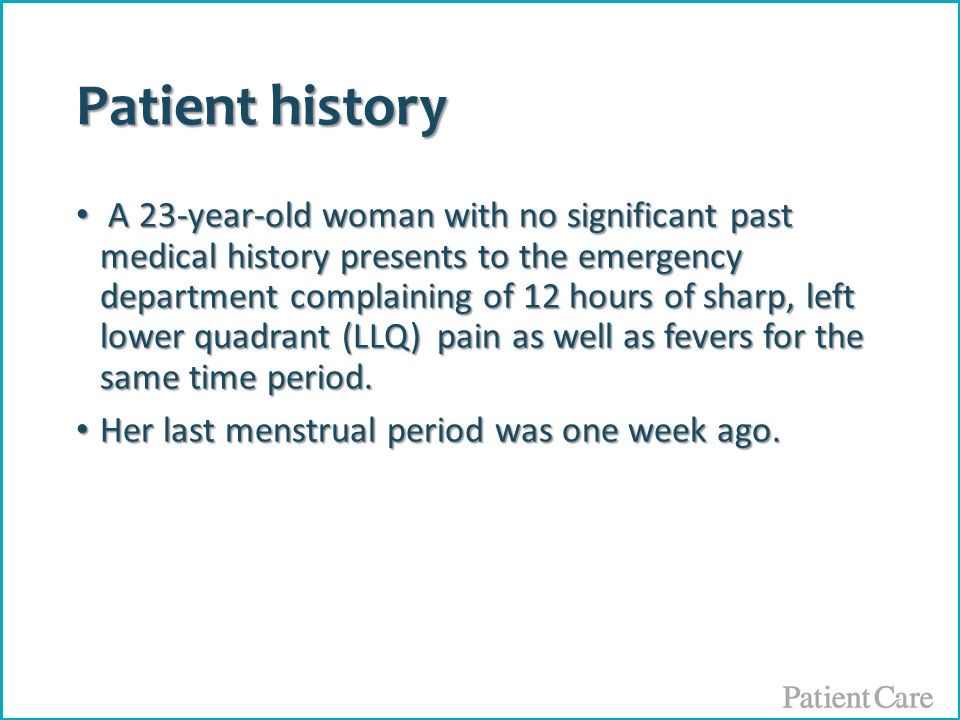
Patient history. A 23-year-old woman with no significant past medical history is complaining of 12 hours of sharp, LLQ pain and a fever for the same time period. Her last menstrual period was 1 week ago.
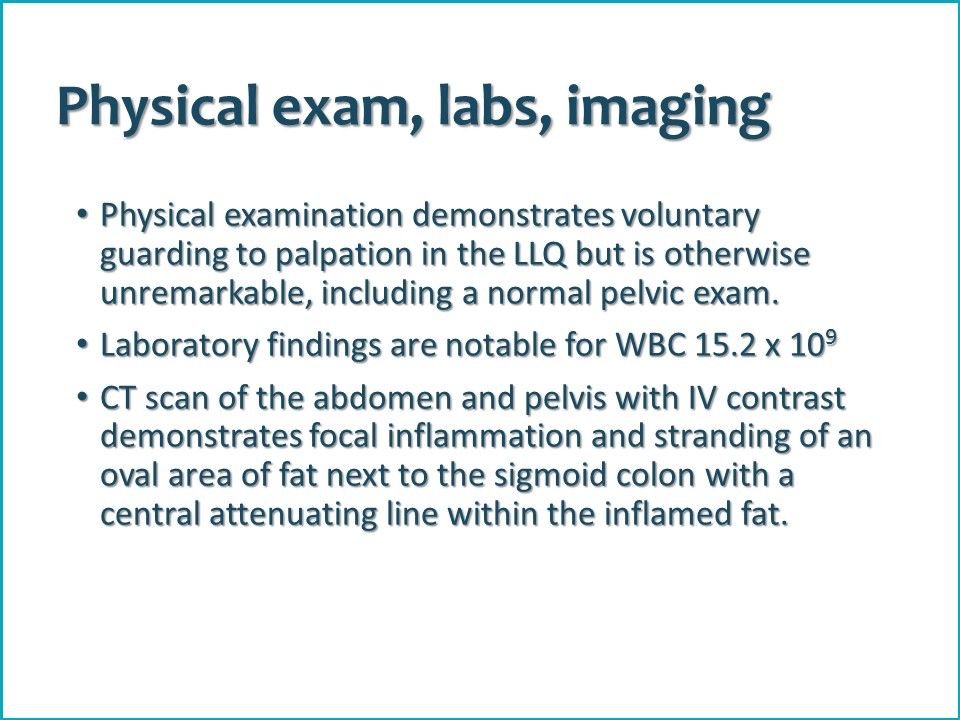
Physical exam, labs, imaging. A physical exam shows voluntary guarding to palpation in the LLQ, but is otherwise unremarkable, including a normal pelvic exam. Laboratory findings are notable for WBC 15.2 x 109 and a CT scan of the abdomen and pelvis with IV contrast demonstrates focal inflammation and stranding of an oval area of fat next to sigmoid colon with central attenuating line within the inflamed fat.
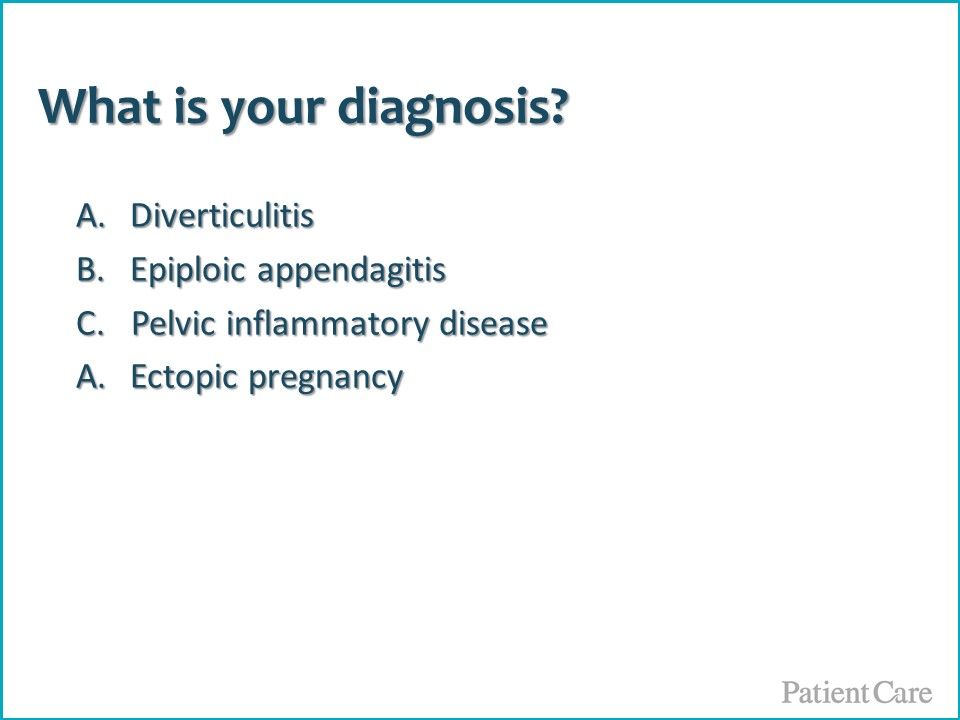
What is your diagnosis? Is it diverticulitis, epiploic appendagitis, pelvic inflammatory disease, or ectopic pregnancy?

Answer: B. Epiploic appendagitis. Epiploic appendages are small outpouchings of fat-filled structures with a serosal covering and are present on the external surface of the colon and project into the peritoneal cavity. The adult colon has between 50 to 100 appendages. Epiploic appendagitis is usually caused by torsion and can cause ischemia and infarction with aseptic fat necrosis and spontaneous venous thrombosis.
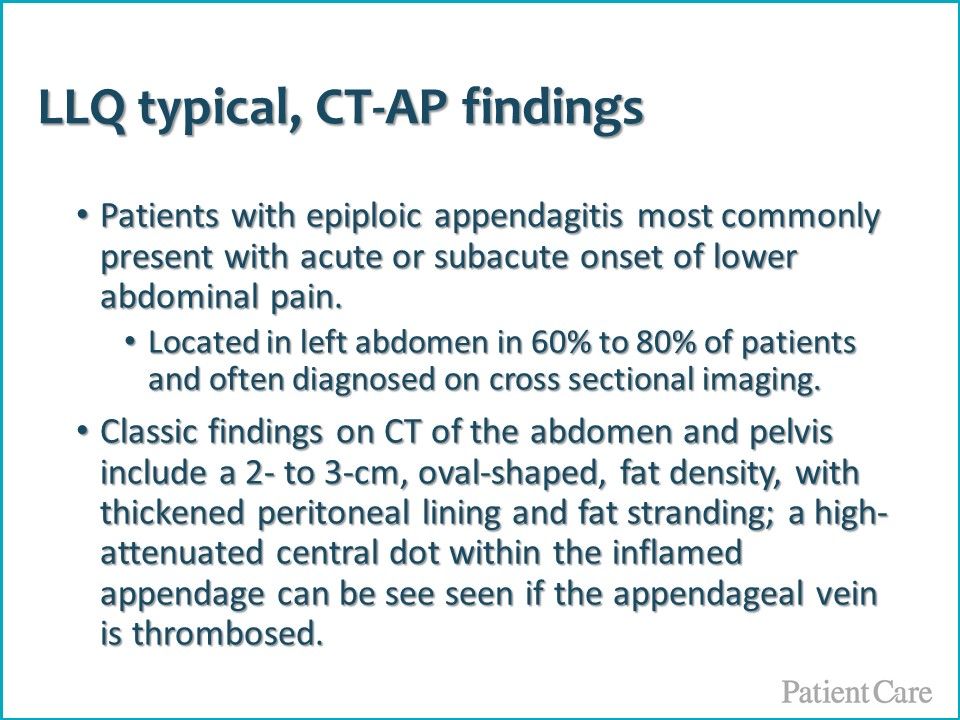
LLQ typical, clues on CT-AP. Patients with epiploic appendagitis most commonly present with acute or subacute onset of lower abdominal pain. Classic findings on a CT scan of the abdomen and pelvis include a 2- to 3-cm, oval-shaped, fat density, with thickened peritoneal lining and fat stranding and a high-attenuated central dot within the inflamed appendage can be see seen if the appendageal vein is thrombosed.
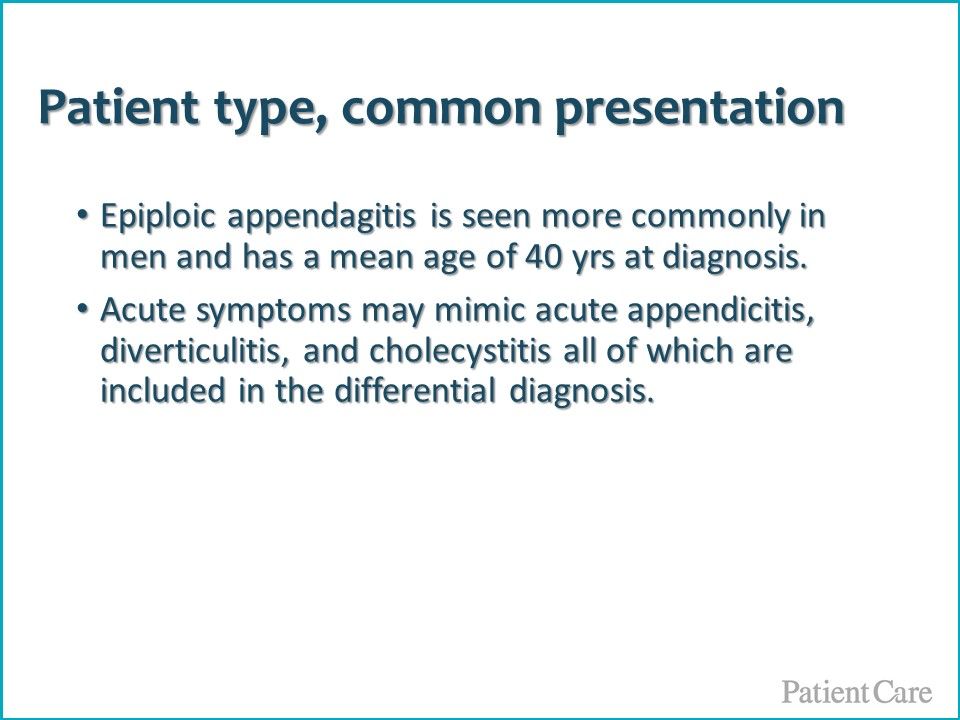
Patient type, differential diagnosis. Epiploic appendagitis is seen more commonly in men and has a mean age of 40 years at diagnosis. Acute symptoms may mimic acute appendicitis, diverticulitis, and cholecystitis, all of which are included in the differential diagnosis.
Follow Dr James on Twitter at: @TedWJamesMD
Related Content:



